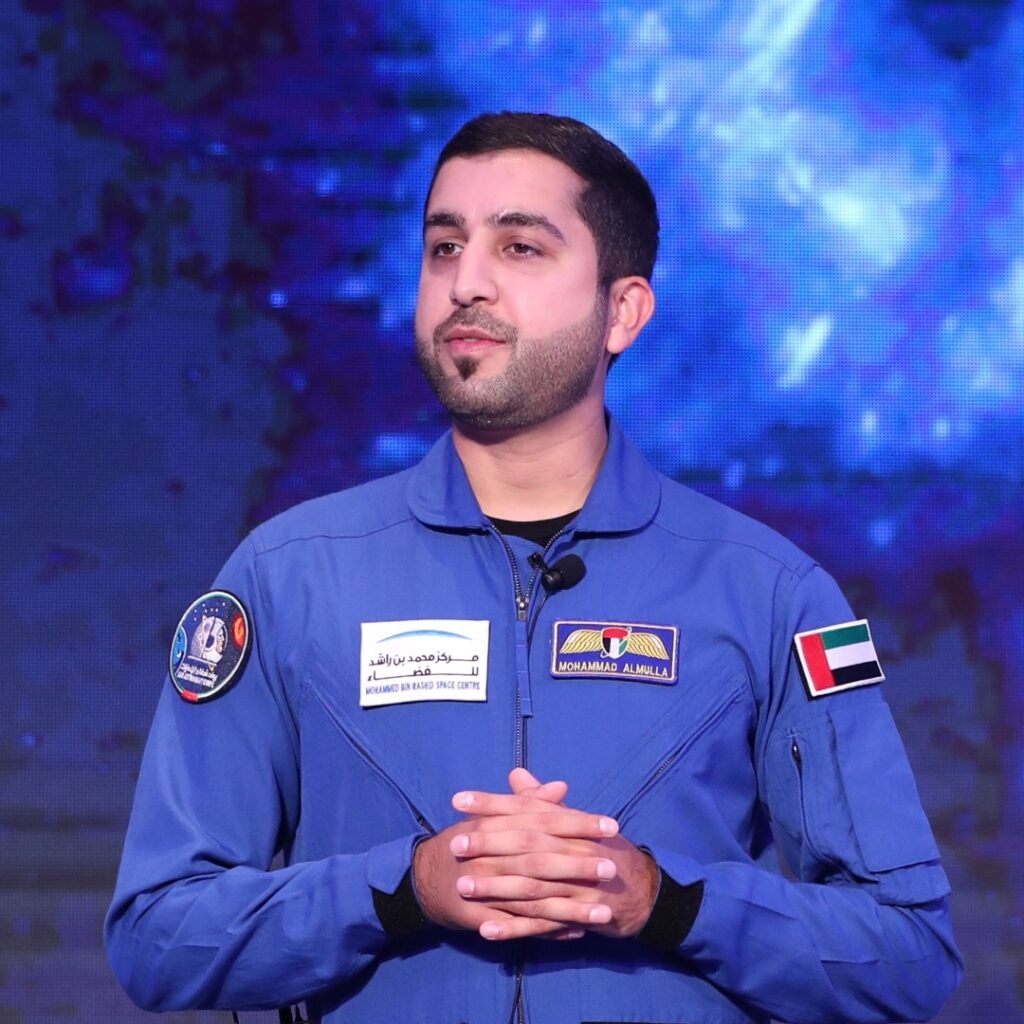
Mohammed Al Mulla and Nora Al Matrooshi learnt how to build fires, make shelters and gather food and water
The UAE’s latest candidate astronauts are making progress with their training at Nasa after completing a survival course in the wilderness.
Mohammed Al Mulla, a former Dubai Police helicopter pilot, and Emirati engineer Nora Al Matrooshi, the first Arab female astronaut, learned how to build fires, make shelters and gather food and water, alongside their Nasa colleagues.
They completed the course in a remote forest at the US Army Aviation Centre of Excellence in Fort Rucker, Alabama.
Mr Al Mulla, 34, and Ms Al Matrooshi, 28, were selected to be part of the UAE’s astronaut corps last year, both who are training at Nasa’s Johnson Space Centre in Houston for the next two years.
“Survival training is one of the crucial exercises undertaken by astronauts,” Mr Al Mulla tweeted on Tuesday. “This is where I developed several skills such as living in difficult conditions and teamwork. My space journey has just begun,”
Survival training has been part of Nasa’s astronaut candidate course for many years.Meet the UAE’s new astronaut who wants to explore the Moon
It teaches trainees crucial skills should they crash-land in a remote location, where they would need to live off the land for days.
The astronauts learnt how to eject from an aircraft. Then, they discovered how to use the resources available to build a shelter, gather food and water, survival medicine, signalling and land navigation.
“The reason we send our new astronauts to survival training is to learn practical skills and certain soft skills they need to be working on,” said Shannon Walker, Nasa candidate class supervisor.
“Some of the aircraft we train on come equipped with an ejection seat and, should something go wrong while we are out training, they may be able to survive for a while before they can be rescued.”
The astronauts take most of their survival training as a group, when tasks are designed to test their ability to work as a team. READ MORE Nasa chief welcomes Emirati astronauts embarking on two-year training programme Dubai Police pilot turned astronaut sets sights on the Moon UAE in talks with international partners to secure second mission to ISS
In space, teamwork is essential, especially during spacewalks, work inside the International Space Station, and during the cruise phase.
Hazza Al Mansouri, the UAE’s first astronaut in space, and reserve astronaut Sultan Al Neyadi, completed survival training in Russia in 2018.
They spent a year at the Gagarin Astronaut Training Centre in Russia’s Star City, which included days in the wilderness in freezing temperatures.
More intensive training awaits Mr Al Mulla and Ms Al Matrooshi, who will learn to fly T-38 supersonic jets, learn Russian, learn the systems of the International Space Station and spend hours under water to learn how to perform spacewalks.
Maj Al Mansouri and Dr Al Neyadi have completed a year of training at Nasa and will continue their progress at the space centre in Houston.
After graduating, all four astronauts would be qualified for Nasa-led missions.
UAE’s first two astronauts learn how to spacewalk – in pictures
:quality(70)/cloudfront-eu-central-1.images.arcpublishing.com/thenational/GXDTC6XJYCIP43DW2OD4NWP4NY.jpg)
:quality(70)/cloudfront-eu-central-1.images.arcpublishing.com/thenational/KJYD5ANBKHBXJ7YM3LG2YRJVX4.jpg)
:quality(70)/cloudfront-eu-central-1.images.arcpublishing.com/thenational/ZTK4LMGW3XCLAKRML5E65BQCXQ.jpg)
:quality(70)/cloudfront-eu-central-1.images.arcpublishing.com/thenational/FR6IIIRBK4V4IM4WLJ6HLF4Q3I.jpg)
:quality(70)/cloudfront-eu-central-1.images.arcpublishing.com/thenational/OJ7T3KR67OOWH6AZ2IMD56EBVQ.jpg)
:quality(70)/cloudfront-eu-central-1.images.arcpublishing.com/thenational/BISA5BREN3GPIGF2XAKM7LUVH4.jpg)
:quality(70)/cloudfront-eu-central-1.images.arcpublishing.com/thenational/TUVLVW74GTK7RPX3UVIPYMGZ2Q.jpg)
:quality(70)/cloudfront-eu-central-1.images.arcpublishing.com/thenational/UYGA67ETC6LEMB3F2O2TIUWIKI.jpg)
:quality(70)/cloudfront-eu-central-1.images.arcpublishing.com/thenational/DYQMVM6YGEHHDBJUYUIISBOYBA.jpg)
:quality(70)/cloudfront-eu-central-1.images.arcpublishing.com/thenational/MJYEEVBU3SBTDUQPBYAOMPE25Y.jpg)
Hazza Al Mansouri, first Emirati man in space, wears a 130 kilogram-heavy extravehicular activities suit for spacewalk training. All photos courtesy of Mohammed bin Rashid Space Centre


